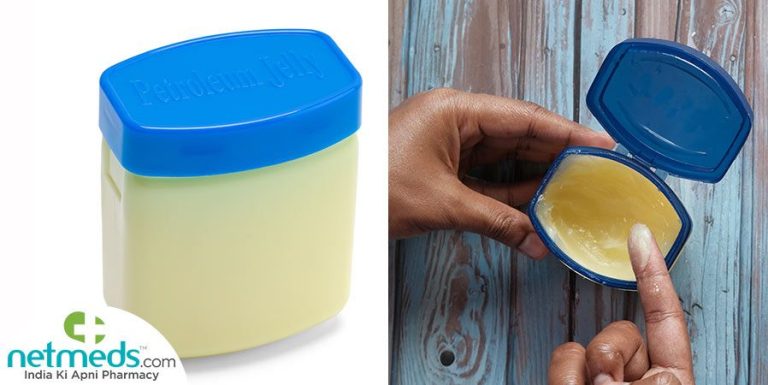Do Soy Candles Smell Different?
Soy wax candles have become increasingly popular in recent years as an alternative to traditional paraffin wax candles. Soy wax is made from soybean oil and offers some advantages over paraffin wax. This article provides an overview of the differences between soy wax and paraffin wax, examining the composition, benefits, fragrance, burning properties, and pros and cons of each type of candle wax.
Paraffin wax is derived from petroleum and is the most commonly used candle wax. It is inexpensive and easy to work with. However, there are some drawbacks to paraffin wax, including the release of carcinogens and soot when burned. There are also environmental concerns with paraffin being a byproduct of oil refining.
In contrast, soy wax is made from a renewable and sustainable resource – soybeans. It is praised for being a cleaner burning wax that does not release harmful chemicals. Soy wax is also biodegradable and environmentally-friendly. While more expensive than paraffin, soy wax offers characteristics that many candle lovers find appealing.
This article will do a deep dive into comparing the key properties and performance of soy wax versus paraffin wax candles. It will enable readers to make an informed decision between the two wax types.
Soy Wax Origins
Soy wax first started being used for candle making in the 1990s. It was introduced as a natural and environmentally friendly alternative to paraffin wax candles (https://mycluckhut.com/blogs/news/why-i-love-getting-lit-my-cluckin-candle-jar-1). Up until that point, most candles were made from petroleum-based paraffin wax. Paraffin wax is derived from crude oil and is not biodegradable or renewable. In contrast, soy wax is made from hydrogenated soybean oil, a renewable and sustainable resource.
The first commercially available 100% soy wax candle was produced by Cargill in the mid-1990s. Cargill trademarked the name NatureWax for their soy wax products. Around the same time, other natural candle companies like Aroma Naturals and Village Candle started offering soy candles as well. The renewable and biodegradable nature of soy wax appealed to environmentally-conscious consumers, and demand for soy candles began to grow.
Over the past 25 years, soy wax has continued to gain popularity and market share in the candle industry. Many handmade and boutique candle makers now use soy wax as their primary wax, citing its clean burn, excellent scent throw, and flexibility for container candles. Major retailers like Yankee Candle and Bath & Body Works have also started offering soy wax candles in response to consumer demand.
Soy Wax Composition
Soy wax is made from hydrogenated soybean oil. The main components of soy wax are (https://www.cinobee.com/Bioproducts/Waxes/44.html):
- Soybean oil
- Hydrogenated soybean oil
- Vegetable esters
- Natural antioxidants
The soybean oil is hydrogenated to turn it from a liquid into a solid wax. The level of hydrogenation controls the melting point and hardness of the finished soy wax. More hydrogenation results in a harder wax with a higher melting point. Vegetable esters are added to improve the burning properties. Antioxidants help prevent the wax from oxidizing and deteriorating over time. Ultimately, the combination of these ingredients produces a natural, clean-burning wax.
Soy Wax Benefits
Soy wax has become increasingly popular for candle making due to its many benefits compared to paraffin wax. Some of the main advantages of using soy wax include:
Soy wax is a natural, renewable resource made from soybeans grown by American farmers. Paraffin wax is a byproduct of petroleum refining.
Candles made from soy wax burn cleaner and emit less soot than paraffin candles when burning. The natural texture of soy wax also allows for better fragrance retention and an evenly burning candle.
Soy wax has a lower melting point than paraffin, making it a safer candle wax that doesn’t get as hot. This reduces the risk of burns and makes soy candles more child and pet friendly.
Additionally, soy wax is biodegradable and environmentally friendly. Paraffin wax is not biodegradable and releases toxins into the air when burned.
The natural properties of soy wax make it an excellent choice for candle makers and consumers looking for a high-quality, clean burning candle wax that is renewable and sustainable.
Soy Wax Fragrance
One of the key benefits of soy wax is its ability to hold fragrance oils effectively. Soy wax has a natural ability to absorb and retain fragrances very well compared to other waxes like paraffin. According to research, soy wax can hold up to 50% more fragrance oil than paraffin wax (Candlesoylutions, 2023).

The recommended fragrance load for soy wax is generally between 6-8% of the total wax weight. This fragrance load allows soy wax candles to achieve both a strong cold throw and hot throw. Cold throw refers to the scent emitted from an unlit candle, while hot throw refers to the scent given off when burning. With the right fragrance percentage, soy candles can fill an entire room with fragrance when lit (Pure Integrity Candles, 2023).
When working with soy wax, it’s important to test different fragrance loads between 5-10% to find the ideal saturation point. Going above 10% risks the fragrance not binding properly with the wax. Finding the optimal fragrance load will result in soy candles that smell strong and consistent from start to finish.
Soy Wax Cold Throw
The cold throw refers to how strongly a candle smells when it is not lit. Soy wax tends to have a weaker cold throw compared to paraffin wax.1 This is because soy wax has a lower melting point than paraffin, so it does not distribute fragrances as readily.2 The molecules in fragrance oils have an easier time permeating the paraffin wax when the candle is solid. The higher melting point of paraffin allows more fragrance oil to be retained in the cold wax pool.
While paraffin candles tend to have a stronger cold throw, there are ways to boost the cold throw in soy candles. Using a higher fragrance load and selecting scent notes that are stronger in soy wax can help. Proper curing of the soy wax also maximizes fragrance retention. Overall, the difference in cold throw between soy and paraffin is not hugely significant. When properly formulated, soy candles can still produce noticeable fragrance when unlit.
Soy Wax Hot Throw
The hot throw of a candle refers to how well the fragrance fills a room when the candle is lit and burning. There is some debate around whether soy or paraffin wax has a stronger hot throw.
According to Lonestar Candle Supply (https://lonestarcandlesupply.com/soy-vs-paraffin/), paraffin wax often has a stronger hot throw than soy wax. This is because paraffin wax has a lower melting point than soy, so the heat of the flame can more quickly vaporize the fragrance oil. The higher density of soy wax means it requires more heat to release its fragrance.
However, according to Candle Salon (https://www.candlesalon.com/post/which-candle-wax-gives-the-best-scent-throw), the difference in hot throw between the two waxes is minimal. Proper wick size and fragrance load have a greater impact. Well-formulated soy candles can have a hot throw comparable to paraffin.
Overall, there is no definitive answer on whether soy or paraffin has a stronger hot throw. With quality wicks and fragrances, both candle waxes can effectively fill a room with fragrance when burning.
Soy Wax Burn Properties
One of the most notable differences between soy wax and paraffin wax is in how they burn. Soy wax has a lower melting point than paraffin wax, so it melts faster once lit. However, because soy wax is denser than paraffin, it requires more heat to fully liquefy and vaporize the fragrance oil. This results in soy candles typically having a slower fragrance release than paraffin candles.
On the other hand, once melted, soy wax contributes to a stronger scent throw than paraffin. The natural ability of soy wax to hold fragrances means that it produces candles with excellent hot scent throw. Additionally, soy wax’s density results in a longer burn time than paraffin, giving off fragrance for many more hours (Lonestar Candle Supply).
The lower melting point of soy wax also means it does not get as hot at the candle’s surface as paraffin does. This results in a lower chance of fragrance burn off at the surface. Soy wax also cools and solidifies smoothly with no visible separation (Harlem Candle Company).
Overall, soy wax may have a slower initial fragrance release, but it makes up for it with stronger hot throw and fragrance retention for a longer burn. Its lower melting point also helps prevent surface fragrance burn off.
Soy Wax Pros and Cons
Soy wax offers some distinct advantages as well as disadvantages compared to other candle waxes like paraffin. Here are some of the main pros and cons of using soy wax for candles:
Pros:
- Renewable and Sustainable – Soybeans are a renewable resource, so soy wax is more sustainable than petroleum-based waxes (source).
- Clean Burning – Soy wax has no petroleum byproducts and burns cleaner than paraffin (source).
- Natural Fragrance – The natural scent of soy wax can complement fragrances (source).
- Customizable – Soy wax can hold higher concentrations of fragrance and dye (source).
Cons:
- Higher Cost – Soy wax is generally more expensive than paraffin wax (source).
- Soft Texture – The softer texture of soy wax means candles must be handled more carefully (source).
- Lower Melting Point – Soy wax melts at a lower temperature than paraffin, impacting performance (source).
Conclusion
In summary, soy wax candles tend to have a stronger scent than paraffin wax candles for a few key reasons:
Soy wax is denser and holds fragrance oils better than paraffin wax. The natural properties of soy wax allow it to absorb and retain scent molecules more effectively.
Soy wax has a lower melting point than paraffin, so the wax pool reaches an ideal temperature to volatilize fragrance oils as the candle burns.
The natural texture and finish of soy wax gives candles a textured surface area that releases fragrance as the melt pool forms. Paraffin’s smooth surface does not facilitate fragrance release as well.
In general, soy wax candles emit a stronger hot and cold scent throw than paraffin. The natural ability of soy wax to absorb and release fragrance makes soy candles more aromatic.




